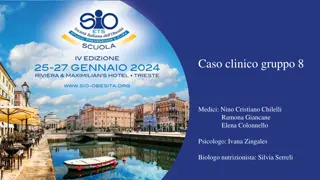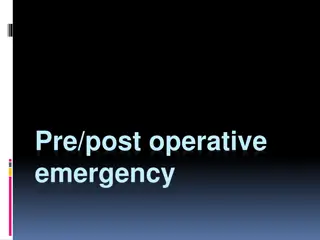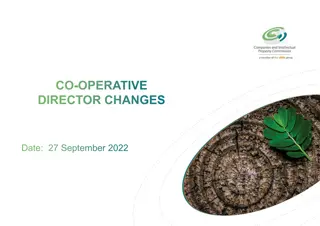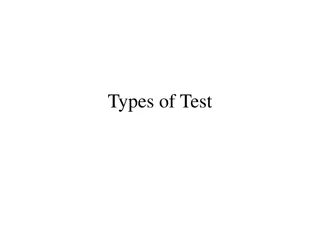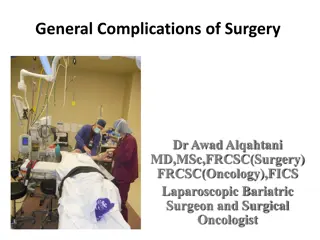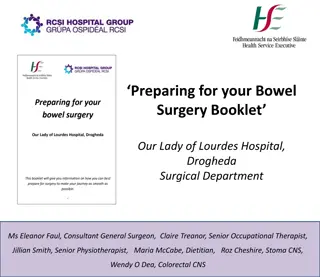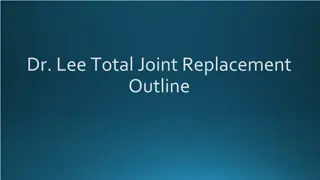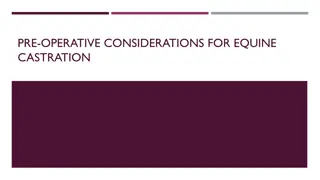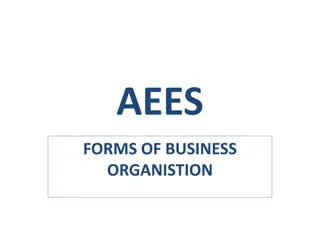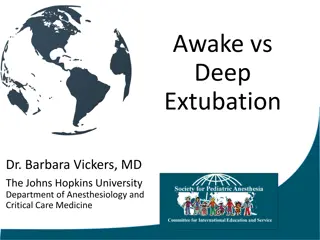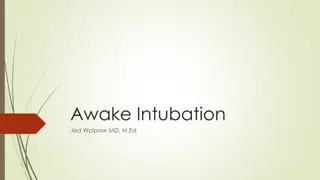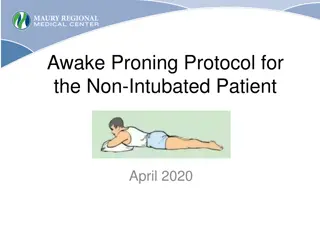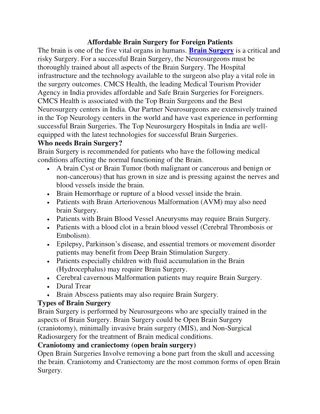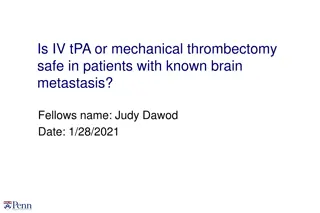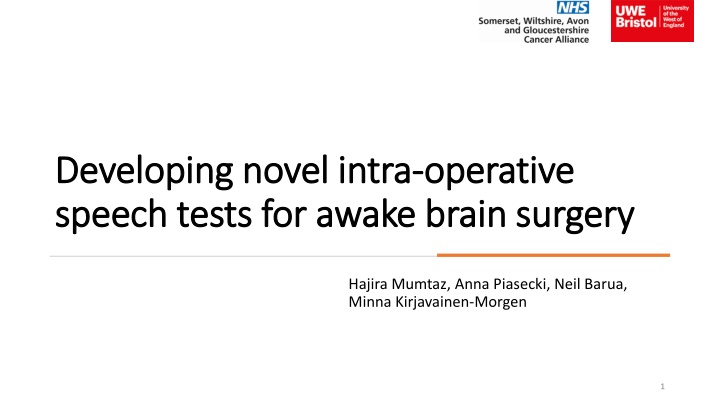
Developing Novel Intra-Operative Speech Tests for Awake Brain Surgery
Addressing the effectiveness of current intra-operative language tests for awake brain surgery, this research proposes designing tests specific to the British population using familiar concepts and the British National Corpus.
Download Presentation

Please find below an Image/Link to download the presentation.
The content on the website is provided AS IS for your information and personal use only. It may not be sold, licensed, or shared on other websites without obtaining consent from the author. If you encounter any issues during the download, it is possible that the publisher has removed the file from their server.
You are allowed to download the files provided on this website for personal or commercial use, subject to the condition that they are used lawfully. All files are the property of their respective owners.
The content on the website is provided AS IS for your information and personal use only. It may not be sold, licensed, or shared on other websites without obtaining consent from the author.
E N D
Presentation Transcript
Developing novel intra Developing novel intra- -operative speech tests for awake brain surgery speech tests for awake brain surgery operative Hajira Mumtaz, Anna Piasecki, Neil Barua, Minna Kirjavainen-Morgen 1
My Beautiful Broken Brain My Beautiful Broken Brain (2014) available at: https://www.netflix.com 2
Awake brain surgery Surgical practice consisting in awakening the patient during surgery to administer motor/language/cognitive tests Applied to people with brain tumours and medically untreatable epilepsy Primary goals: maximize tumour removal and minimize language impairments Open window to explore language in the brain! 3
Current intra-operative language tests Traditional testing: counting 1-10 Object naming (the most common task) Action naming 5
Are the currently used intra-operative language tests effective? Despite of the intra-operative testing, deficits in spontaneous speech are common (Santini et al., 2012) Language tests should be: Relevant Sensitive Complex 6
Our work Designing tests specific to the British population Including task items that refer to concepts that are most familiar and most frequently used by the British speakers Use of the British National Corpus to compile test items 7
My old school friend Emma came on a flying visit this weekend. We had a girls night out on Saturday with a couple of other friends. Even though it was raining cats and dogs, but we still went out for a meal to a local restaurant. Emma kept ordering all the junk food that the restaurant had, while continuously having a whinge about her weight and not being able to stick to her diet. (taken from O Dell & McCarthy, 2009) Did you notice anything peculiar about this text? 9
Testing beyond single words My old school friend Emma came on a flying visit this weekend. We had a girls night out on Saturday with a couple of other friends. Even though it was raining cats and dogs, but we still went out for a meal to a local restaurant. Emma kept ordering all the junk food that the restaurant had, while continuously having a whinge about her weight and not being able to stick to her diet. (taken from O Dell & McCarthy, 2009) Language does not exist in the form of individual words that are put together to convey meanings 50-60% of our daily language use comprises multi-word expressions Eye-tracking evidence shows that multi-word expressions are processed faster than grammatical language 10
Project work to-date STEP 1 STEP 2 STEP 3 STEP 4 Clinical validation Item selection Design Standardization Item selection Design Clinical validation Standardization Data collection in patients Collecting norms in normal population Selection of the task items from the BNC 80 accuracy in normal population 12
References BNC Consortium, The British National Corpus, XML Edition, 2007, Oxford Text Archive, Erman, B., & Warren, B. (2000). The idiom principle and the open choice principle. Text & Talk, 20(1), 29 62. O Dell, F., & McCarthy, M. (2009). English collocations in use: Advanced. The Electronic Journal for English as a Second Language, 13(2). https://www.youtube.com/ https://images.google.com/ https://www.netflix.com Rofes, A. (2015). Verbs and nouns in awake neurosurgery: Needs and answers [Phd, University of Trento]. Retrieved from http://eprints-phd.biblio.unitn.it/1572/ Santini, B., Talacchi, A., Squintani, G., Casagrande, F., Capasso, R., & Miceli, G. (2012). Cognitive outcome after awake surgery for tumors in language areas. Journal of Neuro-Oncology, 108(2), 319 326. Wray, A., & Perkins, M. R. (2000). The functions of formulaic language: An integrated model. Language & Communication, 20(1), 1-28. 14
Further considerations Designing and validating tests for: Less transparent collocations (e.g., explode a myth) Free word combinations (e.g., read a newspaper) Idioms (e.g., kick the bucket) Metaphors (e.g., heart of gold) Compound words may be? Effect/interaction of word-related properties/psycholinguistic variables on task performance. 15


